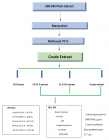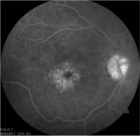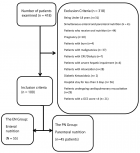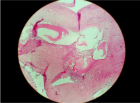Abstract
Research Article
Post-harvest assessment of infectious fruit rot on selected fruits in Lafia, Nasarawa State Nigeria
EH Kwon-Ndung*, TP Terna, EE Goler and G Obande
Published: 15 November, 2022 | Volume 6 - Issue 3 | Pages: 154-160
The post-harvest health and microbial safety of plant products and foods continue to be a global concern to farmers, consumers, regulatory agencies and food industries. A study was carried out to evaluate the pathogenicity of fungi associated with post-harvest rot of oranges, watermelons and bananas in Lafia, Nasarawa State, Nigeria. Healthy fruits inoculated with fungal spores obtained from rotted fruit tissues were incubated at ambient temperature conditions and observed daily for the appearance and development of tissue rot. Oranges and Watermelons had the highest number of fungal isolates (3) compared to banana (2). Fungi belonging to the genus Curvularia were the most isolated (37.50%), followed by both Aspergillus and Colletotrichum (25.00% respectively) and lastly Alternaria (12.50%). The highest tissue rot diameter of sweet orange (2.40 cm) was induced by Alternaria sp. followed by Curvularia geniculate (1.40 cm) and lastly Colletotrichum sp. (1.28 cm). The highest rot of banana fruit tissues was produced by A. niger (3.90 cm), followed by Curvularia geniculate (3.40 cm). Aspergillus sp. produced the highest tissue rot diameter on watermelon fruits (1.93 cm), followed by Colletotrichum sp.
(1.30 cm) and lastly Curvularia geniculate (1.20 cm). Differences in the susceptibilities of different fruits to rot by fungal pathogens were significant (p ≤ 0.05). There is need for improved handling of fruits after harvest to prevent losses due to bacterial and fungal rots in the study area.
Read Full Article HTML DOI: 10.29328/journal.jpsp.1001090 Cite this Article Read Full Article PDF
Keywords:
Post-harvest; Pathogenicity; Fruits; Biocontrol
References
- Gatto MA, Ippolito A, Linsalata V, Cascarano NA, Nigro F, Vanadia S, Di Venere D. Activity of extracts from wild edible herbs against postharvest fungal diseases of fruit and vegetables. Postharvest Biology and Technology.2011;61(1): 72-82.
- Negi PS. Plant extracts for the control of bacterial growth: efficacy, stability and safety issues for food application. Int J Food Microbiol. 2012 May 1;156(1):7-17. doi: 10.1016/j.ijfoodmicro.2012.03.006. Epub 2012 Mar 11. PMID: 22459761.
- Tripathi PN, Dubey K, Shukla AK. Use of some essential oils as post-harvest botanical fungicides in the management of grey mould of grapes caused by Botrytis cinerea. World Journal of Microbiology & Biotechnology. 2008; 24: 39-46. [ISSN: 0959-3993, Springer Netherlands]
- Fernandez-Cruz ML, Mansilla ML, Tadeo JL. Mycotoxins in fruits and their processed products: Analysis, occurrence and health implications. J Adv Res. 2010; 1: 113-122.
- Zain ME. Impact of mycotoxins on humans and animals. J Saudi Chem Soc. 2011; 15: 129-
- Finlayson JE, Rimmer SR, Pritchard MK. Infection of Carrots by Sclerotinia sclerotiarum. Canadian Journal of Plant pathology. 1989; 11: 242.
- https://www.worldcat.org/title/botany-of-citrus-and-its-wild-relatives-of-the-orange-subfamily-family-rutaceae-subfamily-aurantioideae/oclc/1613239.1943.
- Webber FC. Observations on the structure, life history and biology of Mycosphaerella ascophylli. Transactions of the British Mycological Society. 1967; 50: 583-601. https://doi.org/10.1016/S0007-1536(67)80090-1.
- Gmitter FG, Hu The possible role of Yunnan, China, in the origin of contemporary citrus species (rutaceae). Econ Bot .1990;44:267–277.
- Gorinstein S, Martı́n-Belloso Olga, Park YS, Haruenkit R, Lojek A, Ĉı́ž Milan , Trakhtenberg S. Comparison of some biochemical characteristics of different citrus fruits. Food Chemistry. 2001; 74(3): 309–315. https://doi.org/10.1016/S0308-8146(01)00157-1
- Wisniewski M, Wilson CL. Biological control of postharvest diseases of fruits and vegetables: recent advances. 1992; 27:94-98.
- Rippon JW, Conway TP, Domes AL. Pathogenic potential of Aspergillus and PenicilliumThe Journal of Infectious Diseases. 1965;27-32.
- El-Ghaouth A, Smilanick JL, Wilson CL. Enhancement of the performance of Candida saitoana by the addition of glycolchitosan for the control of postharvest decay of apple and citrus fruit. Postharvest biology and Technology. 2000; 19(1):103-110.
- Abirami LSS, Pushkala R, Srividya N. Antimicrobial activity of selected plant extracts against two important fungal pathogens isolated from Papaya fruit. International Journal of Research in Pharmaceutical and Biomedical Sciences. 2013; 4 (1): 234- 238.
- Konsue W, Dethoup T, Limtong S. Biological Control of Fruit Rot and Anthracnose of Postharvest Mango by Antagonistic Yeasts from Economic Crops Leaves. Microorganisms. 2020 Feb 25;8(3):317. doi: 10.3390/microorganisms8030317. PMID: 32106522; PMCID: PMC7143844.
- Kubo I, Nakanishi Some terpenoid insect antifeedants from tropical plants. In: Advances in Pesticide Science (H. Geissbúhler, G.T.ed.) 1979.
- Dixit SN, Chandra H; Tiwari R, Dixit V. Development of a botanical fungicide against blue mould of mandarins. J. Stored Prod. Res. 1995; 31(2): 165-172
- Wilson M. Biocontrol of aerial plant diseases in agriculture and horticulture: current approaches and future prospects. J Ind Microbiol Biotech1997;19: 188–191. https://doi.org/10.1038/sj.jim.2900436
- Improving scalable banana agronomy for small scale farmers in highland banana cropping systems in East Africa. https://www.iita.org/iita-project/improving-scalable-banana-agronomy/2016.
- Good Agricultural Practices for Bananas. https://www.fao.org/3/i6917e/i6917e.pdf 2016.
- Zeven AC, de Wet JMJ.Dictionary of cultivated plants and their regions of diversity excluding most ornamentals, forest trees and lower plants
- Zohary D, Hopf M. Domestication of Plant in the Old World. The Origin and Spread of Cultivated Plants in West Asia, Europe and Nile Valley. Oxford University Press, Oxford. 2000;316.
- Makaepea M,Beswa D, Afam IO Jideani. "Watermelon as a potential fruit snack." International Journal of food properties. 2019; 22(1): 355-370.
- Wehner, Todd C. "Watermelon." Springer, New York, NY. 2008; 381-418.
- Pal KK, Gardener M. Biological Control of Plant Pathogens. The Plant Health Instructor. 2006.
- Compant S, Duffy B, Nowak J, Clément C, Barka EA. Use of plant growth-promoting bacteria for biocontrol of plant diseases: principles, mechanisms of action, and future prospects. Appl Environ Microbiol. 2005 Sep;71(9):4951-9. doi: 10.1128/AEM.71.9.4951-4959.2005. PMID: 16151072; PMCID: PMC1214602.
- Hajieghrari B, Torabi-Giglou M, Mohammadi MR, Davari M. Biological potantial of some Iranian Trichoderma isolates in the control of soil borne plant pathogenic fungi. African Journal of Biotechnology. 2008; 7(8): 967-972.
- Hermosa MR, Grondona I, Iturriaga EA, Diaz-Minguez JM, Castro C, Monte E, Garcia-Acha I. Molecular characterization and identification of biocontrol isolates of Trichoderma spp. Appl Environ Microbiol. 2000 May;66(5):1890-8. doi: 10.1128/AEM.66.5.1890-1898.2000. PMID: 10788356; PMCID: PMC101429.
- Okigbo RN, Ikediugwu FEO. Studies on Biological Control of Postharvest Rot of Yam (Dioscorea) with Trichoderma viride. Journal of Phytopathology. 2000; 148: 351-355.
- Kwon-Ndung EH, Akomolafe GF, Goler EE, Terna TP, Ittah MA, Umar ID, Waya JI, Markus M. Diversity Complex of Plant Species Spread in Nasarawa State, Nigeria. International Journal of Biodiversity and Conservation, 2016; 8(12): 334-350.
- Training manuals on Mycology. 2000.
- Samson RA, Visagie CM, Houbraken J, Hong SB, Hubka V, Klaassen CH, Perrone G, Seifert KA, Susca A, Tanney JB, Varga J, Kocsubé S, Szigeti G, Yaguchi T, Frisvad JC. Phylogeny, identification and nomenclature of the genus Aspergillus. Stud Mycol. 2014 Jun;78:141-73. doi: 10.1016/j.simyco.2014.07.004. PMID: 25492982; PMCID: PMC4260807.
- International Committee on Food Microbiology and Hygiene, a committee of the International Union of Microbiological Societies (IUMS).
- Gibbons S. Anti-staphylococcal plant natural products. Nat Prod Rep. 2004 Apr;21(2):263-77. doi: 10.1039/b212695h. Epub 2004 Mar 1. PMID: 15042149.
- Okigbo RN. Mycoflora of tuber surface of white yam (Dioscorea rotundata Poir) and postharvest control of pathogens with Bacillus subtilis. Mycopathologia. 2003;156(2):81-5. doi: 10.1023/a:1022976323102. PMID: 12733628.
- Terna TP, Okogbaa JI, Waya JI, Paul-Terna FC, Yusuf SO, Emmanuel NY, Simon A. Response of Different Mango and Tomato Varieties to Post-Harvest Fungal FruitRot in Lafia, Nassarawa State, Nigeria.IOSR Journal of Environmental Science, Toxicology andFood Technology.2015; 9(12):106-109.
- Ojo O, Adebayo T, Wale O. Post-harvest control of botrydiplodia rot disease of watermelon using saprophytic isolates of yeast: International Journal of Agriculture and Crop Sciences. 2014; 7(12): 974-980.
- Sumby P, Barbian KD, Gardner DJ, Whitney AR, Welty DM, Long RD, Bailey JR, Parnell MJ, Hoe NP, Adams GG, Deleo FR, Musser JM. Extracellular deoxyribonuclease made by group A Streptococcus assists pathogenesis by enhancing evasion of the innate immune response. Proc Natl Acad Sci U S A. 2005 Feb 1;102(5):1679-84. doi: 10.1073/pnas.0406641102. Epub 2005 Jan 24. PMID: 15668390; PMCID: PMC547841.
- Jidda MB, Adamu MI. Rot Inducing Fungi of Watermelon (Citrullus lanatus) Fruits in Storage and Fruit Stalls in Maiduguri, Nigeria. International Journal of Advanced Academic Research Sciences, Technology & Engineering. 2017.
- Dube J, Ddamulira G, Maphosa M. "Watermelon production in Africa: challenges and opportunities." International Journal of Vegetable Science. 2021;27(3): 211-219.
- Oyewole OA, Al-Khalil S, Kalejaiye OA. The antimicrobial activities of ethanolic extracts of Basella alba on selected microorganisms. International Research Journal of Pharmacy irjponline.com.
- Sarkar S, Girisham S, Reddy SM. Incidence of post-harvest fungal diseases of banana fruit in Warangal market. Indian Phytopathology. 2009; 62(1): 103-105.
- Rajee O, Patterson J. Decolorization of Azo Dye (Orange MR) by an Autochthonous Bacterium, Micrococcus sp. DBS 2. Indian J Microbiol. 2011 Jun;51(2):159-63. doi: 10.1007/s12088-011-0127-0. Epub 2011 Jan 25. PMID: 22654158; PMCID: PMC3209883.
- Lotfy WA, Ghanem KM, El-Helow ER. Citric acid production by a novel Aspergillus niger isolate: II. Optimization of process parameters through statistical experimental designs. Bioresour Technol. 2007 Dec;98(18):3470-7. doi: 10.1016/j.biortech.2006.11.032. Epub 2007 Feb 20. PMID: 17317159.
- Mendonça LBP, Zambolim L, Badel JL. Bacterial citrus diseases: major threats and recent progress. J Bacteriol Mycol Open Access. 2017;5(4):340-350. DOI: 15406/jbmoa.2017.05.00143
- Srivastava R, LalA A. Incidence of Post-Harvest Fungal Pathogens in Guava and Banana in Allahabad. Journal of Horticultural Sciences,June 2009;85-89. https://jhs.iihr.res.in/index.php/jhs/article/view/565.
- Anitha M, Swathy SR, Venkateswari P. Prevalence of disease-causing microorganisms in decaying fruits with analysis of fungal and bacterial species. J. Res. in Health Sciences. 2014;2(2): 547-54.
- Agarwal GP, Hasija SK. Alternaria rot of citrus fruits. Indian Phytopathology. 1967; 20:259-260.
- Chand JN, Rattan BK, Suryanarayana D.Epidemiology and control of fruit rot of citrus caused by Alternaria citri Ellis and Pierce. Punjab Agricultural University, Ludhiana, India. Journal of Research. 1967; 4:217-222.
Figures:
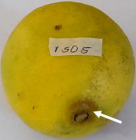
Figure 1
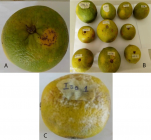
Figure 2
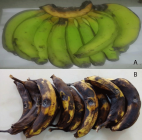
Figure 3
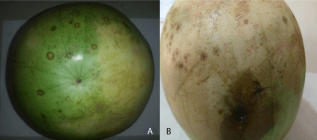
Figure 4
Similar Articles
-
Control of phytopathogenic microorganisms of post-harvest in tomato (Lycopersicon esculentum Mill.) with the use of citrus extractRueda Puente Edgar Omar*,Ruíz-Alvarado Cristina,Juan José Reyes-Pérez,Hernández-Montiel Luis Guillermo,Amador Bernardo. Control of phytopathogenic microorganisms of post-harvest in tomato (Lycopersicon esculentum Mill.) with the use of citrus extract. . 2018 doi: 10.29328/journal.jpsp.1001018; 2: 037-043
-
Isolation and biochemical characterization of Plant Growth Promoting (PGP) bacteria colonizing the rhizosphere of Tef crop during the seedling stageZerihun Tsegaye*,Birhanu Gizaw,Genene Tefera,Adey Feleke,Solomon Chaniyalew,Tesfaye Alemu,Fasil Assefa . Isolation and biochemical characterization of Plant Growth Promoting (PGP) bacteria colonizing the rhizosphere of Tef crop during the seedling stage. . 2019 doi: 10.29328/journal.jpsp.1001027; 3: 013-027
-
Non-chemical control of Armillaria mellea infection of Prunus persicaJim Downer*,Ben Faber. Non-chemical control of Armillaria mellea infection of Prunus persica. . 2019 doi: 10.29328/journal.jpsp.1001031; 3: 050-055
-
Causal agents of Post-harvest Rot of Pumpkin (Cucurbita pepo L.) and their control using Indigenous Practices in Hong, Adamawa StateAnjili SM*,Kazi N,Chimbekujwo IB. Causal agents of Post-harvest Rot of Pumpkin (Cucurbita pepo L.) and their control using Indigenous Practices in Hong, Adamawa State. . 2019 doi: 10.29328/journal.jpsp.1001033; 3: 062-066
-
Effect of Khaya Senegalensis Bark and Oil on Post-Harvest Fungal Agents of Groundnut Seeds Rot in Adamawa State, NigeriaChannya FK*,Asama P,Anjili SM . Effect of Khaya Senegalensis Bark and Oil on Post-Harvest Fungal Agents of Groundnut Seeds Rot in Adamawa State, Nigeria. . 2019 doi: 10.29328/journal.jpsp.1001035; 3: 076-080
-
Natural infection of squash fruits (Cucurbita pepo) by Zucchini Yellow Mosaic potyvirus (ZYMV) in Alexandria governorateMahmoud Hamdy Abd El-Aziz*. Natural infection of squash fruits (Cucurbita pepo) by Zucchini Yellow Mosaic potyvirus (ZYMV) in Alexandria governorate. . 2020 doi: 10.29328/journal.jpsp.1001047; 4: 028-032
-
Strobilurins: New group of fungicidesRasha E Selim*,Mohamed S Khalil. Strobilurins: New group of fungicides. . 2021 doi: 10.29328/journal.jpsp.1001062; 5: 63-064
-
Effect of chitosan and silicon oxide treatments on postharvest Valencia Late (Citrus × sinensis) fruitsBeltrán R*,Otesinova L,Cebrián N,Zornoza C,Breijo F,Reig J,Garmendia A,Merle H. Effect of chitosan and silicon oxide treatments on postharvest Valencia Late (Citrus × sinensis) fruits. . 2021 doi: 10.29328/journal.jpsp.1001063; 5: 065-071
-
Genetic variability in the susceptibility of immature peach fruit to Monilinia laxa is associated with surface conductance but not stomatal densityLeandro Oliveira Lino,Carole Confolent,Véronique Signoret,Michel Génard,Bénédicte Quilot-Turion*. Genetic variability in the susceptibility of immature peach fruit to Monilinia laxa is associated with surface conductance but not stomatal density. . 2022 doi: 10.29328/journal.jpsp.1001081; 6: 091-100
-
Characterization of senegalese races of Xanthomonas oryzae PV. oryzae to identify resistance genes to useTall H*,Tékété C,Comte A,Noba K,Hutin M,Szurek B,Verdier V,Cunnac S. Characterization of senegalese races of Xanthomonas oryzae PV. oryzae to identify resistance genes to use. . 2022 doi: 10.29328/journal.jpsp.1001087; 6: 135-145
Recently Viewed
-
Investigate the Effect of Coating Concentration and Coating Thickness on the Anti-microbial Properties of Polycarbonate SheetSaleh Alkarri. Investigate the Effect of Coating Concentration and Coating Thickness on the Anti-microbial Properties of Polycarbonate Sheet. Ann Biomed Sci Eng. 2024: doi: 10.29328/journal.abse.1001029; 8: 011-020
-
The Importance of the Concept of Acute Pneumonia for Choosing the Principles of its Treatment and ResultsIgor Klepikov*. The Importance of the Concept of Acute Pneumonia for Choosing the Principles of its Treatment and Results. J Pulmonol Respir Res. 2024: doi: 10.29328/journal.jprr.1001051; 8: 003-008
-
Prospective Coronavirus Liver Effects: Available KnowledgeAvishek Mandal*. Prospective Coronavirus Liver Effects: Available Knowledge. Ann Clin Gastroenterol Hepatol. 2023: doi: 10.29328/journal.acgh.1001039; 7: 001-010
-
Adult Neurogenesis: A Review of Current Perspectives and Implications for Neuroscience ResearchAlex, Gideon S*,Olanrewaju Oluwaseun Oke,Joy Wilberforce Ekokojde,Tolulope Judah Gbayisomore,Martina C. Anene-Ogbe,Farounbi Glory,Joshua Ayodele Yusuf. Adult Neurogenesis: A Review of Current Perspectives and Implications for Neuroscience Research. J Neurosci Neurol Disord. 2024: doi: 10.29328/journal.jnnd.1001102; 8: 106-114
-
Plant growth, Yield and Leaf Nutritional value of Jute (Corchorus olitorius L.) as Influenced by Banana Peel levels under Salt Stress conditions in Coastal region of CameroonMathias Julien Hand*,Chimène Fanta Abib,Kingsley Mbi Tabi,Alphonse Ervé Nouck,Libert Brice Tonfack,Victor Désiré Taffouo,Emmanuel Youmbi. Plant growth, Yield and Leaf Nutritional value of Jute (Corchorus olitorius L.) as Influenced by Banana Peel levels under Salt Stress conditions in Coastal region of Cameroon. J Plant Sci Phytopathol. 2024: doi: 10.29328/journal.jpsp.1001145; 8: 131-140
Most Viewed
-
Evaluation of Biostimulants Based on Recovered Protein Hydrolysates from Animal By-products as Plant Growth EnhancersH Pérez-Aguilar*, M Lacruz-Asaro, F Arán-Ais. Evaluation of Biostimulants Based on Recovered Protein Hydrolysates from Animal By-products as Plant Growth Enhancers. J Plant Sci Phytopathol. 2023 doi: 10.29328/journal.jpsp.1001104; 7: 042-047
-
Sinonasal Myxoma Extending into the Orbit in a 4-Year Old: A Case PresentationJulian A Purrinos*, Ramzi Younis. Sinonasal Myxoma Extending into the Orbit in a 4-Year Old: A Case Presentation. Arch Case Rep. 2024 doi: 10.29328/journal.acr.1001099; 8: 075-077
-
Feasibility study of magnetic sensing for detecting single-neuron action potentialsDenis Tonini,Kai Wu,Renata Saha,Jian-Ping Wang*. Feasibility study of magnetic sensing for detecting single-neuron action potentials. Ann Biomed Sci Eng. 2022 doi: 10.29328/journal.abse.1001018; 6: 019-029
-
Physical activity can change the physiological and psychological circumstances during COVID-19 pandemic: A narrative reviewKhashayar Maroufi*. Physical activity can change the physiological and psychological circumstances during COVID-19 pandemic: A narrative review. J Sports Med Ther. 2021 doi: 10.29328/journal.jsmt.1001051; 6: 001-007
-
Pediatric Dysgerminoma: Unveiling a Rare Ovarian TumorFaten Limaiem*, Khalil Saffar, Ahmed Halouani. Pediatric Dysgerminoma: Unveiling a Rare Ovarian Tumor. Arch Case Rep. 2024 doi: 10.29328/journal.acr.1001087; 8: 010-013

HSPI: We're glad you're here. Please click "create a new Query" if you are a new visitor to our website and need further information from us.
If you are already a member of our network and need to keep track of any developments regarding a question you have already submitted, click "take me to my Query."








